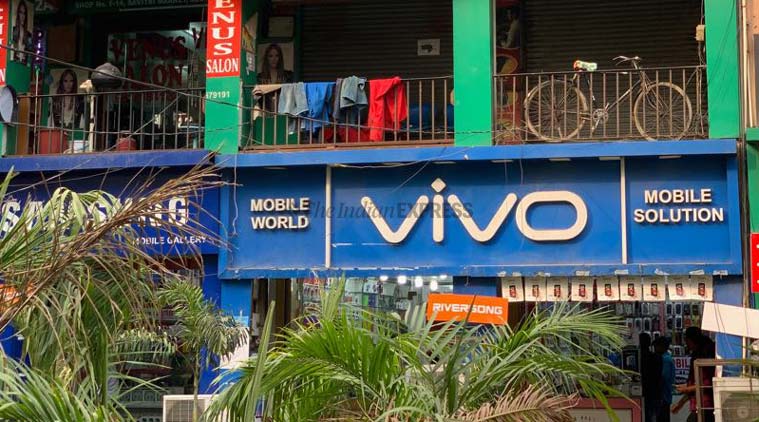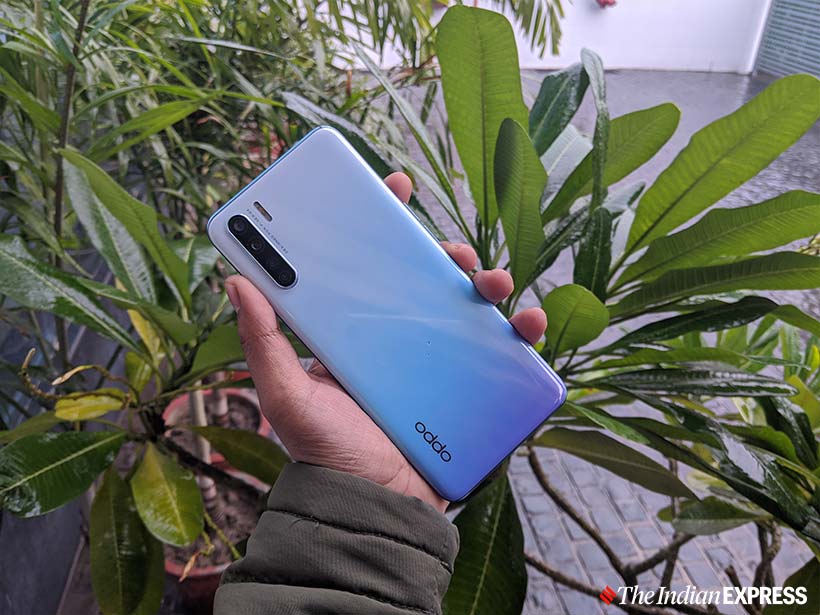 BBK Electronics is the biggest player in the Indian smartphone market, if one were to combine the share of Vivo, Oppo, Realme and OnePlus. (Image source: Shruti Dhapola/Indian Express)
BBK Electronics is the biggest player in the Indian smartphone market, if one were to combine the share of Vivo, Oppo, Realme and OnePlus. (Image source: Shruti Dhapola/Indian Express)
The number one smartphone company in India is actually not Xiaomi, but BBK Electronics. BBK who, you might ask. Well, BBK Electronics is the parent company of Oppo, Vivo, Realme, OnePlus and iQOO, the brands know more than the company behind it. In fact, Oppo, Vivo, and Realme together account for 43 per cent in the Indian market against Xiaomi’s 28 per cent, as per shipping data for Q4 2019 from Hong Kong-based market-research firm Counterpoint.
These numbers make BBK Electronics the largest smartphone company in India. While BBK Electronics is still far from reaching the market share of Finland-based Nokia which held 58 per cent of the phone shipments in India in 2007, these numbers are still substantial.
The big question is: How did Dongguan-based BBK Electronics take this unprecedented lead in the Indian smartphone market, ahead of Xiaomi and Samsung? The answer to this question lies in the way BBK Electronics position its individual brands without worrying much about similarities in their products and marketing.
Take the case of Oppo and Vivo, two of the largest smartphone brands in India. Yes, both brands are managed separately with different teams and manufacturing facilities. But one thing that is common among Oppo and Vivo is that both brands are chasing the same buyer. Both brands play on price and specifications and target diverse consumers across cities and small towns.
On top of it, both brands are known for spending big on high-profile advertising campaigns often featuring top Bollywood actors and cricketers. Another common thread between the two brands is the investment in the offline market as well as the strengthening of distribution channels. Here’s where things get especially interesting.
 Oppo and Vivo have a strong offline presence in India. (Image source: Shruti Dhapola/Indian Express)
Oppo and Vivo have a strong offline presence in India. (Image source: Shruti Dhapola/Indian Express)
When other brands were busy talking about the scope of growth by selling phones online, Oppo and Vivo were busy expanding their presence in the offline market. The fact that you can buy Oppo and Vivo smartphones in any part of India is the real success of both these brands.
If Oppo and Vivo cater to the masses, OnePlus is flourishing in the premium segment. OnePlus thrives on the buzz it creates around its smartphones and the unique business model it operates on. OnePlus has helped drive the premium segment in India by opening up people’s appetite for costlier phones when they think of an upgrade. At half the price of its premium competitors, OnePlus has consistently proven to be the excellent value of money and this has been the reason behind the cult-like following it has nurtured in India and other markets.
Read our brand blogs: | Samsung blog | Apple blog
BBK Electronics also owns Realme, a spin-off brand from Oppo. The brand was only founded in 2018, but Realme has already seen a meteoric rise in India, where its shipments grew 255 per cent last year, according to Counterpoint. The strategy of giving customers what they wanted without charging extra has resonated with people and that’s what driving Realme.
Somewhere down the line, BBK Electronics has understood the Indian smartphone market by catering to all segments: the top-end, the mid-end and low-end. The success of Oppo and Vivo, as well as OnePlus and Realme, shows that the strategy of creating different independent brands could be the way to go.
 The newly launched Oppo F15, which was just introduced in India. (Image source: Karanveer Arora/Indian Express)
The newly launched Oppo F15, which was just introduced in India. (Image source: Karanveer Arora/Indian Express)
Many say this model is full of risks, but BBK Electronics’ approach has been flexible. If demand for smartphones of one brand starts falling, BBK can switch to another brand to meet targets. And if one brand is missing on a particular segment, create a new brand (like Vivo did with IQOO) and test the market potential. This couldn’t be possible, if Oppo, Vivo, Realme, OnePlus and iQOO, weren’t individual brands.
But the competition is in no mood to give up so early. Smartphone maker Xiaomi has recently announced that it is spinning off ‘POCO’ as a standalone brand. Launched in 2018, Poco was pitched as Xiaomi’s answer to phones from OnePlus and Samsung in India.
Now, the brand is gearing up to launch the Poco X2 on February 4, which will be aimed at Realme XT and Samsung A51. It remains to be seen to what degree and how widely that impacts Realme and BBK’s other brands.
